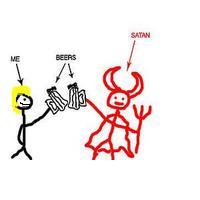I quibble, because I'm tedious.
Moving on, here is some stuff I learned from the book and the fabulous endnotes supplied in the Modern Library edition:
- enteric fever is typhoid. Even though I took typhoid oral vaccine before I went to Syria (a real pain because you have to keep it cold. Has live bugs in it), I have trouble keeping this straight so, once again, this is the stomach ailment you get from accidentally eating poo. Typhus, OTH, is spread by lice bites. It's what killed Wyatt Earp's wife and the rash is a classic symptom.
- Watson was injured in the Second Afghan War, which lasted from 1878-80. The short version of the story is the British were pissed about Russian meddling (as they have a long history of with this place) and it ended with a British victory, if all their aims weren't satisfied.
- Wondering about the First Afghan War? 1839-42. Also fought over Russian influence, which was more imagined than tangible. A change in government prompted the British to withdraw but not before the Brits tore up Kabul in retaliation for the massacre of Elphinstone's Army
- This great line from Holmes. So true today, you need only look around the modern office. "What you do in this world is a matter of no consequence. The question is, what can you make people believe that you have done."
- Everyone knows Stradivari, the maker of the famous violin. But did you know he was a student of Amati? Early 17th century, Cremona, Italy. What made Stradivarius' so special? There's an ongoing argument about that. It could have been the wood, cause by a petite ice age in Europe during the 17th century that slowed tree growth, although that doesn't explain why all violins cranked out in Europe during this time were equally good. Others believe it was the varnish the wood was treated with.
- Aqua Tofana is a tincture of arsenic named after the famous Italian entrepreneur, Guilia Tofana, who evidently made a living in the 17th century by selling poison to would-be widows in Naples and Rome. Although the footnotes say she killed 600 people, Wiki says that confession was obtained under torture so who knows.
- Wonder where the term bohemian came from? Scenes de la Vie de Boheme written by Henri Barger in 1848 and inspired by his itinerant artist friends. I guess I'd never given this much thought and assumed Bohemia was part of Germany. Wrong, although the Germans have occupied it. Czechoslovakia, now the Czech Republic. Watson is reading this book while waiting for Holmes to return from following the old woman (really a man in drag) who claimed the duplicate of the found wedding ring. I find his reading choice endearing. He really was ill-treated by the Rathbone film era.
- "Un sot trouve toujours un plus sot qui l'admire." A fool can always find a greater fool to admire him.

No comments:
Post a Comment